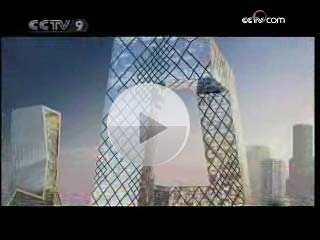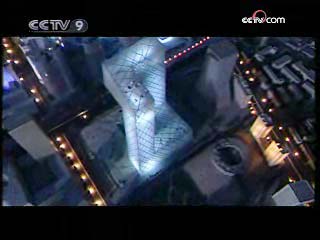------Program code: DO-090104-07006 (what's this?)
Source: CCTV.com
01-04-2009 16:24
 |
When faced with all manner of queries Koolhaas showed complete confidence in his design. He said his design was not a piece of nonsense that had come about as a result of unrealistic daydreaming. He and his company had chosen to come to China and design a building for CCTV only after careful consideration.
In the beginning of the year, just when he received the bidding invitation from CCTV, Koolhaas was deeply attracted by this project. He and his partner Ole Scheeren soon realized that this is the best opportunity to learn about and enter China.
 |
Almost at the same time, Koolhaas received another invitation letter, this time from America. New York Municipalities was inviting OMA to offer a design for the reconstruction of the World Trade Center, destroyed after the 911 attack.
One opportunity was in New York, the other in Beijing. The style of each city was different and their civilizations distinctive. For a while Koolhaas was in a dilemma.
Koolhaas was no a stranger to New York. In fact, his first book, Delirious New York published in 1978, was considered a classic on the culture and architecture of New York due to its unique perspective and sharp writing style.
Later, he participated in the competition for the Museum of Modern Art New York Expansion Project and designed the Headquarters for Prada in New York. These achievements made Koolhaas widely-known in US.
Although Koolhaas had never designed anything for Beijing, years before he had demonstrated a strong interest in the ancient culture of China.
To Koolhaas the most important aspect of the New York and Beijing projects was that there were inherent and major differences in the inner meaning of their styles of architecture.
In the end Koolhaas made his final choice between the two projects. He chose the one that was about the future.
In point of fact, almost every architect of note had made the CCTV project the target of attention. The planned new site was to be located in the central area of the CBD, which was not only the most active business area, but also a window through which Beijing was embracing the world. In this area, every inch of land was worth at least a gold coin, but CCTV had the power to provide as much as 187,000 square meters of land on which the architects could fully express their imaginations. Naturally Rem Koolhaas found this highly attractive.
